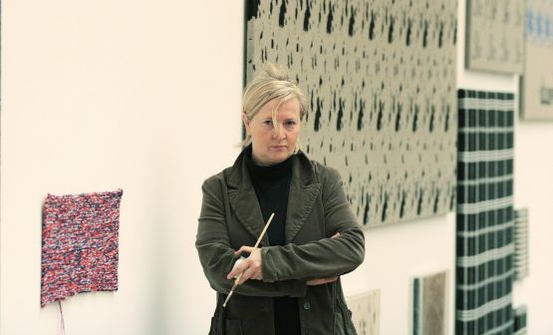
Courtesy Museum Ludwig

Lauren Palmer

Conceptual artist Rosemarie Trockel works across media and genres: her creations defy classification. As Jordan Kantor described in a 2013 Artforum review of her show at the New Museum in New York, the German artist employs a “radical material fluidity” in her work.
Whether sculpture, video, or collage, Trockel’s process is as heterogeneous as they come, using whatever media best conveys the idea. Her work probes at traditional notions of gender and cultural production while never falling into the trap of being didactic.
To celebrate her 63rd birthday, her words on artists and art-making are below. (We are indebted to Isabelle Graw’s excellent 2003 interview with the artist in Artforum.)
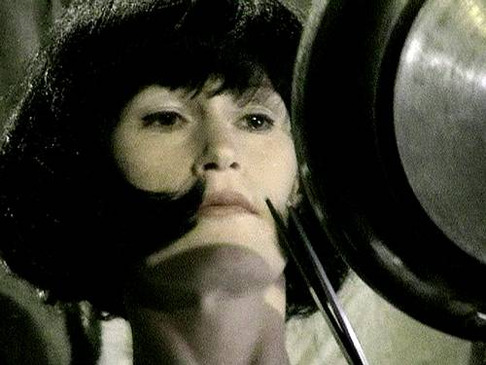
Rosemarie Trockel assisted by Marc Comes, stills from Manus Spleen.
Image: manuburghart.com.
On battling agoraphobia:
“For a long time I could leave my apartment only with great effort. My teacher Werner Schriefers, the former director of the school, always had to come to my house. In Cologne at that time there was a euphoric feeling that something new was just beginning, but because of my condition I found myself in an artistic vacuum. Such a phobia could be seen as a reaction to those spaces I felt drawn to but that seemed inaccessible to me.”
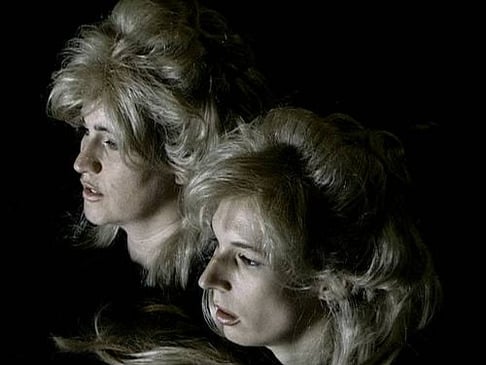
Rosemarie Trockel assisted by Marc Comes, stills from Manus Spleen.
Image: manuburghart.com.
On New York vs. Cologne in the Eighties:
“I felt drawn more to what was happening in New York. In Cologne a lot of energy was wasted in power struggles, while in New York the equal status of women artists seemed much less contested.”
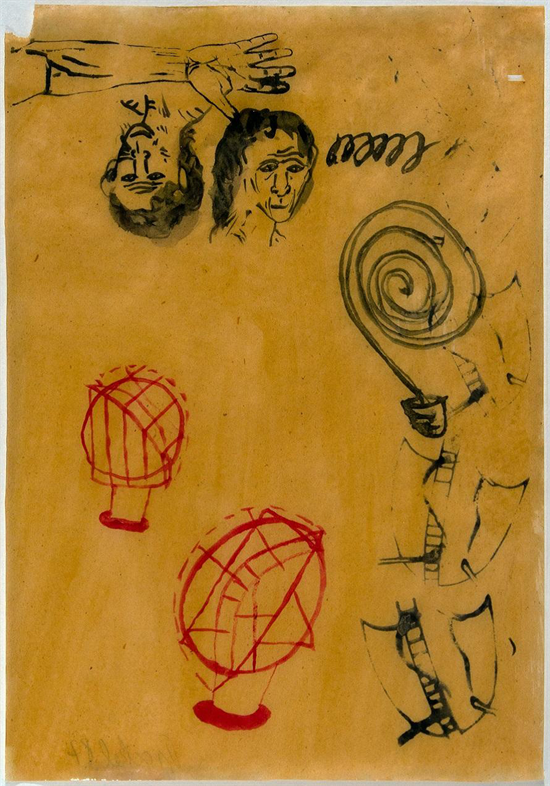
Rosemarie Trockel, Utan Titel (Untitled), (1987).
Image: Courtesy artnet Auctions. Estimate: 5,000—7,000 USD.
On art made by animals:
“The monkey interests me as an imitator of human beings, as an imitator full stop.”
(An orangutan named Tilda painted a triptych that Trockel included in her 2012 show “A Cosmos” at the New Museum in New York.)
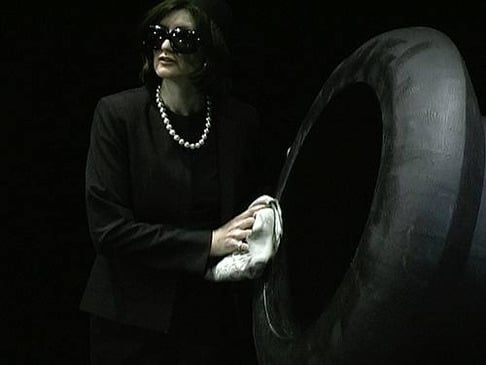
Rosemarie Trockel assisted by Marc Comes, stills from Manus Spleen.
Image: manuburghart.com.
On Joseph Beuys:
“I was captivated by Beuys, but his authoritarian behavior rather repulsed me. My relationship to him was characterized by ambivalence.”
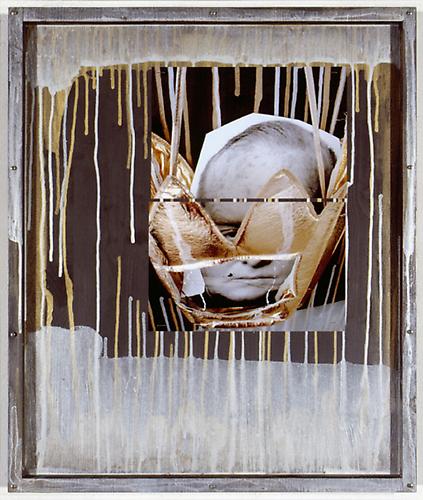
Rosemarie Trockel, Nobody Will Survive 2 (2008).
Image: Courtesy of Skarstedt Gallery.
On Martin Kippenburger:
“Kippenburger’s system was indeed purely masculine, and naturally at some point I’d had enough of it.”
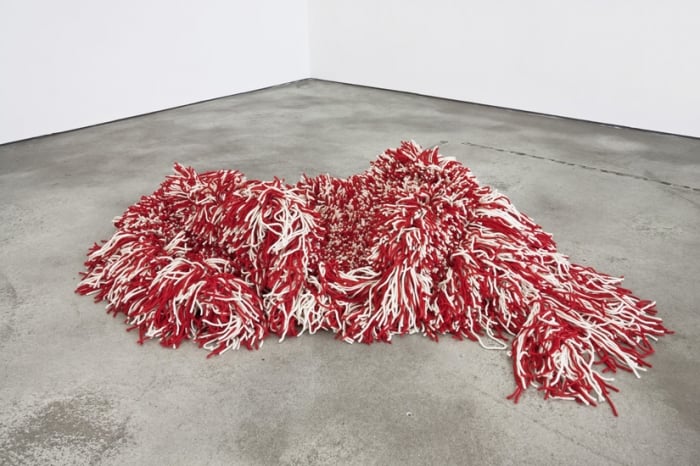
Rosemarie Trockel, Untitled (Amaca, red-white) (2000).
Image: Courtesy of Sprueth Magers.
On finishing:
“The minute something works, it ceases to be interesting. As soon as you have spelled something out, you should set it aside.”